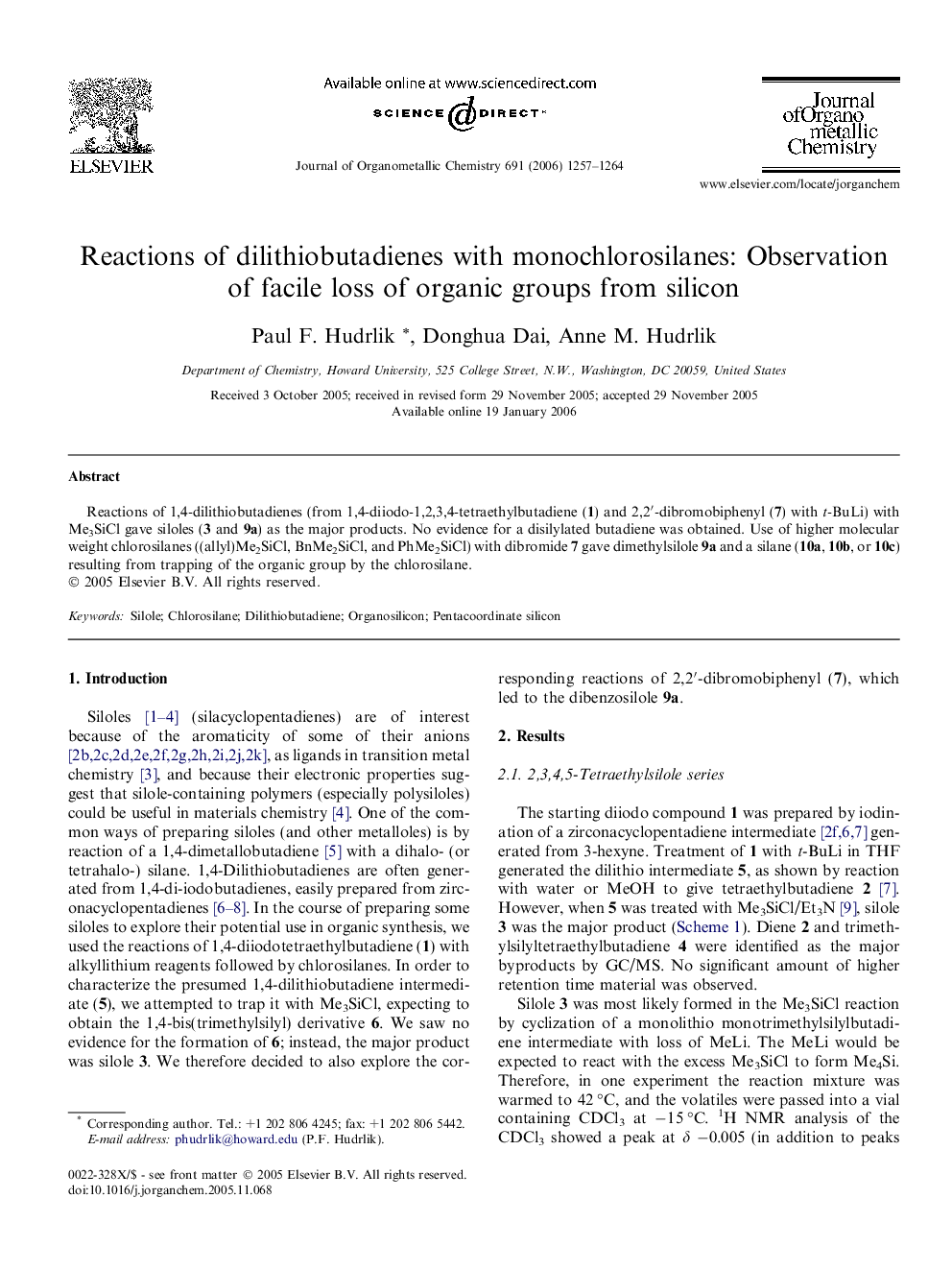| Article ID | Journal | Published Year | Pages | File Type |
|---|---|---|---|---|
| 1328604 | Journal of Organometallic Chemistry | 2006 | 8 Pages |
Reactions of 1,4-dilithiobutadienes (from 1,4-diiodo-1,2,3,4-tetraethylbutadiene (1) and 2,2′-dibromobiphenyl (7) with t-BuLi) with Me3SiCl gave siloles (3 and 9a) as the major products. No evidence for a disilylated butadiene was obtained. Use of higher molecular weight chlorosilanes ((allyl)Me2SiCl, BnMe2SiCl, and PhMe2SiCl) with dibromide 7 gave dimethylsilole 9a and a silane (10a, 10b, or 10c) resulting from trapping of the organic group by the chlorosilane.
Graphical abstractReactions of 1,4-dilithiobutadienes (e.g., 8) with RMe2SiCl gave siloles (e.g., 9) as the major products, along with a silane (R2SiMe2) formed by the reaction of RLi with the chlorosilane. There was no evidence for the formation of a disilylated butadiene.Figure optionsDownload full-size imageDownload as PowerPoint slide
